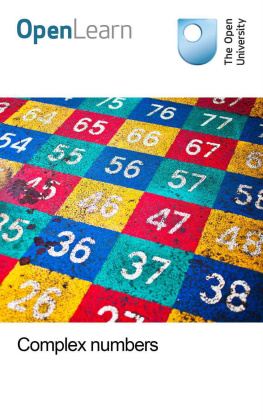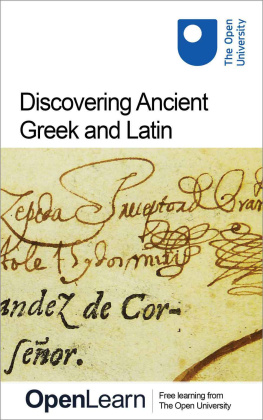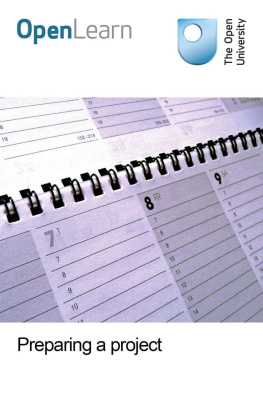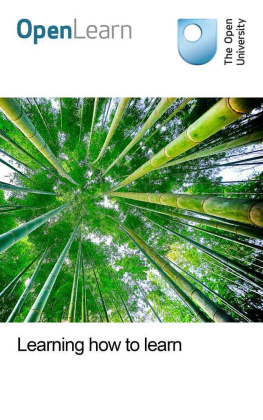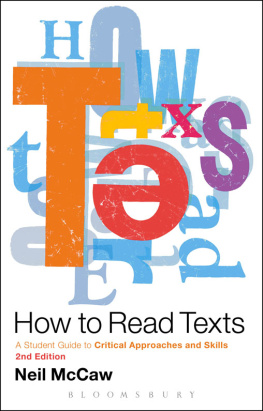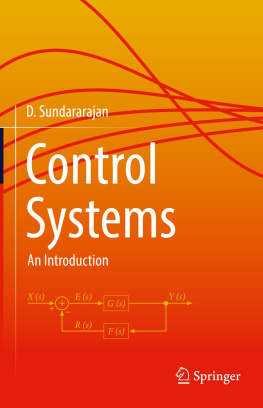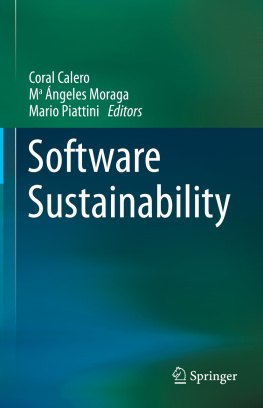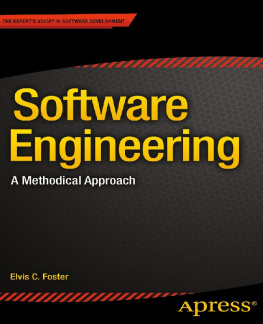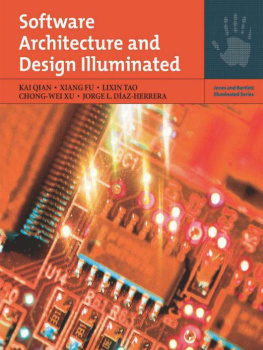A276_2Getting started on classical Latin
Getting started on classical Latin
About this free course
This free course is an adapted extract from the Open University course A276 Getting started on Classical Latin: http://www.open.ac.uk/courses/modules/a276.
This version of the content may include video, images and interactive content that may not be optimised for your device.
You can experience this free course as it was originally designed on OpenLearn, the home of free learning from The Open University www.open.edu/openlearn/history-the-arts/getting-started-on-classical-latin/content-section-0
There youll also be able to track your progress via your activity record, which you can use to demonstrate your learning.
Copyright 2016 The Open University
Intellectual property
Unless otherwise stated, this resource is released under the terms of the Creative Commons Licence v4.0 http://creativecommons.org/licenses/by-nc-sa/4.0/deed.en_GB . Within that The Open University interprets this licence in the following way: www.open.edu/openlearn/about-openlearn/frequently-asked-questions-on-openlearn . Copyright and rights falling outside the terms of the Creative Commons Licence are retained or controlled by The Open University. Please read the full text before using any of the content.
We believe the primary barrier to accessing high-quality educational experiences is cost, which is why we aim to publish as much free content as possible under an open licence. If it proves difficult to release content under our preferred Creative Commons licence (e.g. because we cant afford or gain the clearances or find suitable alternatives), we will still release the materials for free under a personal end-user licence.
This is because the learning experience will always be the same high quality offering and that should always be seen as positive even if at times the licensing is different to Creative Commons.
When using the content you must attribute us (The Open University) (the OU) and any identified author in accordance with the terms of the Creative Commons Licence.
The Acknowledgements section is used to list, amongst other things, third party (Proprietary), licensed content which is not subject to Creative Commons licensing. Proprietary content must be used (retained) intact and in context to the content at all times.
The Acknowledgements section is also used to bring to your attention any other Special Restrictions which may apply to the content. For example there may be times when the Creative Commons Non-Commercial Sharealike licence does not apply to any of the content even if owned by us (The Open University). In these instances, unless stated otherwise, the content may be used for personal and non-commercial use.
We have also identified as Proprietary other material included in the content which is not subject to Creative Commons Licence. These are OU logos, trading names and may extend to certain photographic and video images and sound recordings and any other material as may be brought to your attention.
Unauthorised use of any of the content may constitute a breach of the terms and conditions and/or intellectual property laws.
We reserve the right to alter, amend or bring to an end any terms and conditions provided here without notice.
All rights falling outside the terms of the Creative Commons licence are retained or controlled by The Open University.
Head of Intellectual Property, The Open University
978 1 47302 485 4 (.kdl)
978 1 47302 486 1 (.epub)
Contents
Introduction
You can experience this free course as it was originally designed on OpenLearn, the home of free learning from The Open University www.open.edu/openlearn/history-the-arts/getting-started-on-classical-latin/content-section-0
The aim of this free course is to enable you to get started on learning Latin in a fairly leisurely but well-focused way. It has been developed in response to requests from students who had had no contact with Latin before and who felt they would like to spend a little time preparing for the kind of learning that studying a classical language involves. This course will give you a taster of what is involved in the very early stages of learning Latin. Along the way, you will learn some Latin words, master the pronunciation of Latin and explore the links between Latin and English. Importantly, too, you will gain a basic understanding of how Latin works its grammar and sentence structure and gain a useful impression of what learning Latin actually involves. The material which follows is designed to be studied in small sections. In all, it will probably take about 810 hours to work through. But even if you have only a small amount of time available, you will find it useful to work through the early sections and familiarise yourself with some basic grammatical terms.
This OpenLearn course is an adapted extract from the Open University course A276 Classical Latin: the language of ancient Rome .
Learning outcomes
After studying this course, you should be able to:
- understand some of the main links between English and Latin
- pronounce Latin words confidently
- have an understanding of basic English grammar in order to recognise and describe the way languages work
- unravel basic Latin sentences.
1Learning Latin: study techniques
You can experience this free course as it was originally designed on OpenLearn, the home of free learning from The Open University www.open.edu/openlearn/history-the-arts/getting-started-on-classical-latin/content-section-0
If you have studied classical literature in translation, at the OU or elsewhere, you will be used to the demands of extensive reading of set books, note-taking and preparing essays. However, the tools of the trade for learning a classical language are somewhat different, and you will need to develop new skills, of which the most basic are actually the most important, since they underpin everything else that you do as you progress your studies in the area.
To study Latin successfully, students typically find they need to develop a study pattern suited to their lifestyle and to the demands of this type of language learning. Little and often is best; however, you may not be able to set aside an hour or so each day. This course will give you the opportunity to try out various study patterns and find out which suits you best.
You will also be able to find out which aspects of language learning come easily to you, and which seem more difficult or more time-consuming. For example, some people find dealing with grammar difficult. Others may worry about memorising words, although with practice many people find that they can develop techniques to help with this. As you work through this material, you might like to experiment with different ways of learning vocabulary for example, writing out the Latin words and/or saying them aloud; thinking of English words which are derived from, and therefore similar to, the Latin words you have learnt; using flash cards; getting a friend to test you; recording vocabulary items and listening back to them; or a combination of these strategies. If you can set up the habit of learning just a few words each day, you will benefit enormously.
2Links between English and Latin
You can experience this free course as it was originally designed on OpenLearn, the home of free learning from The Open University www.open.edu/openlearn/history-the-arts/getting-started-on-classical-latin/content-section-0
Although Latin is not the direct ancestor of the English language, as it is of languages such as Italian, French and Spanish (the so-called Romance languages), it has nevertheless given us an enormous number of English words. According to some estimates, around half of all English words come from Latin.


